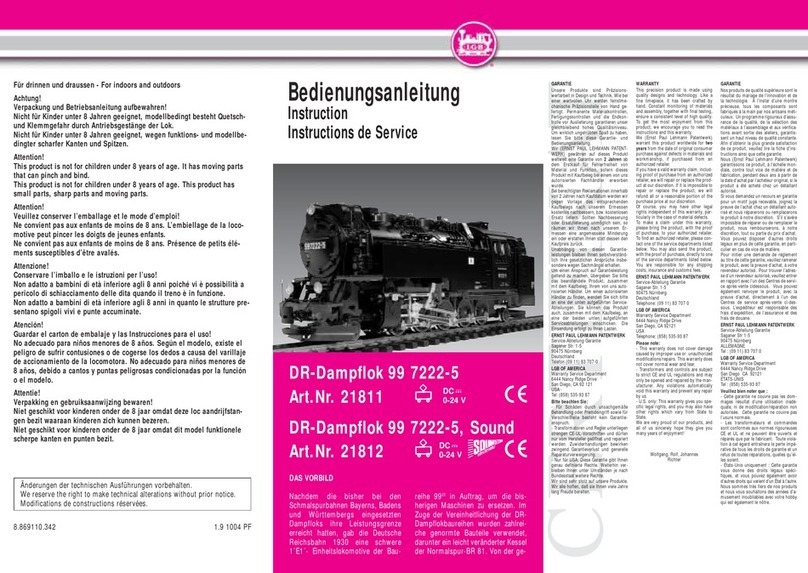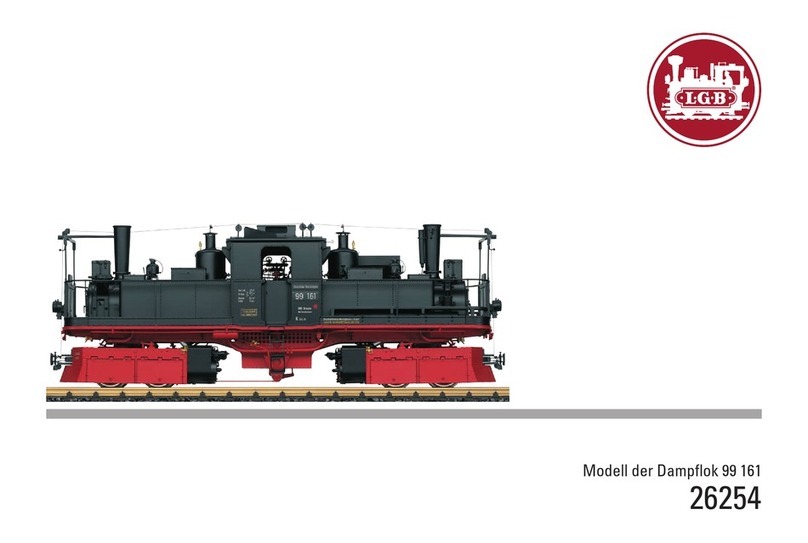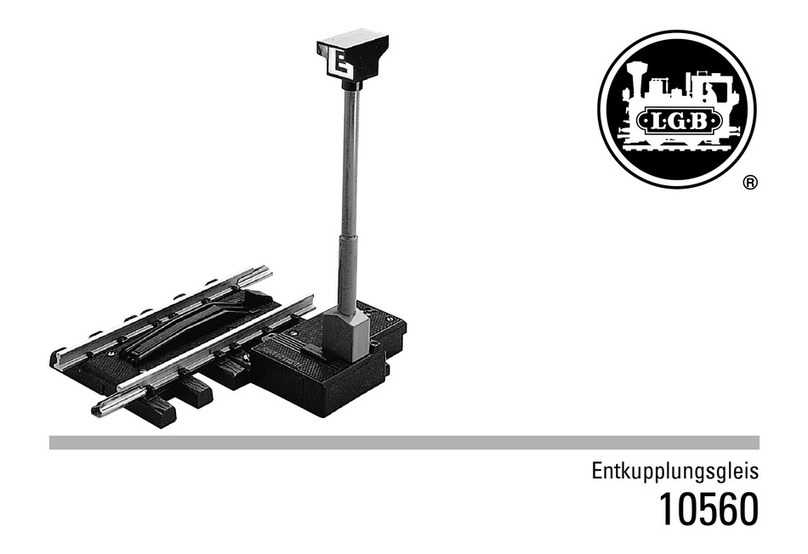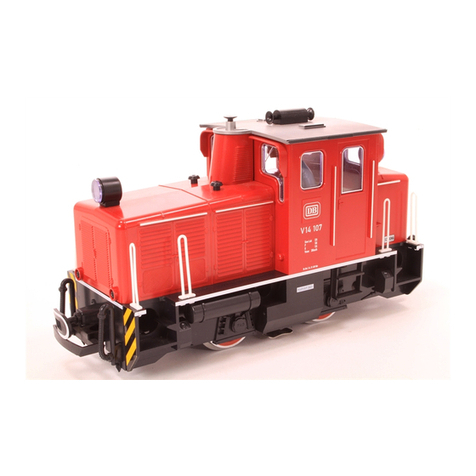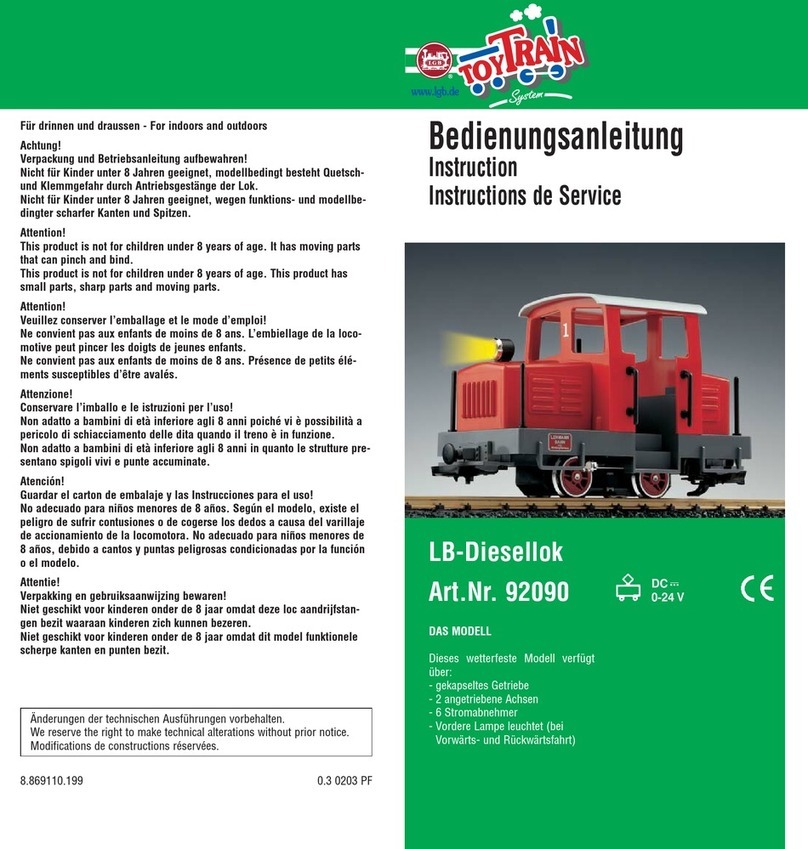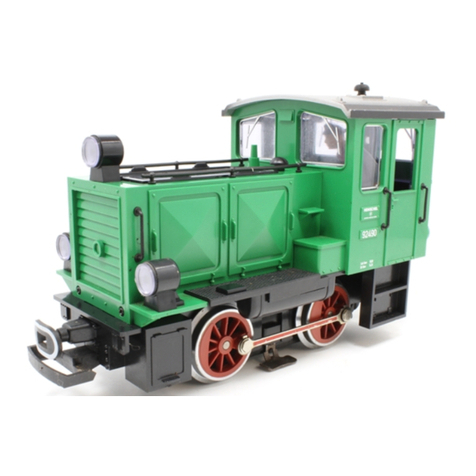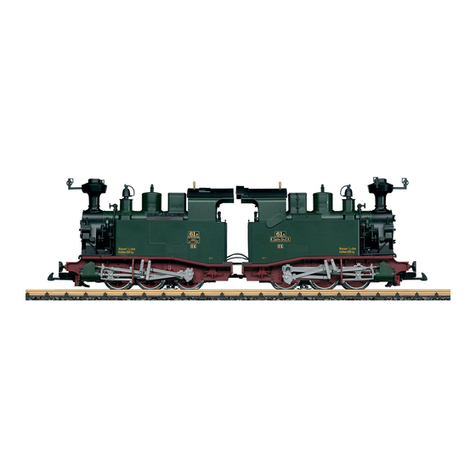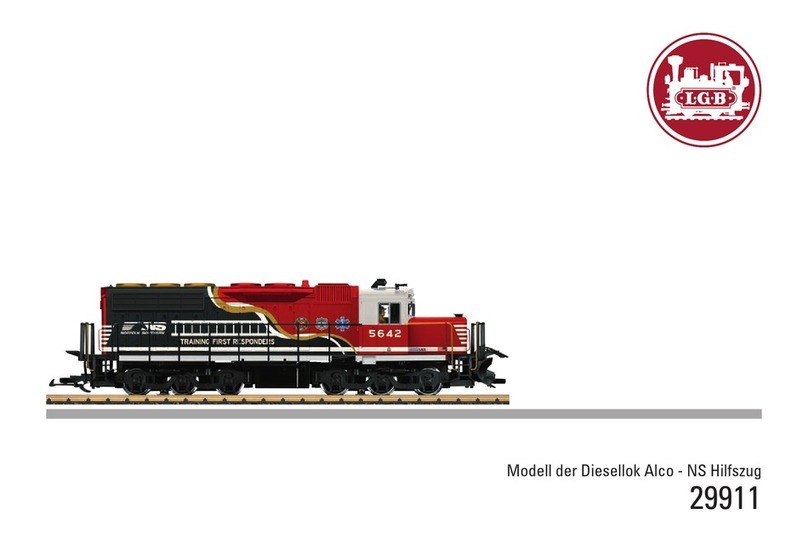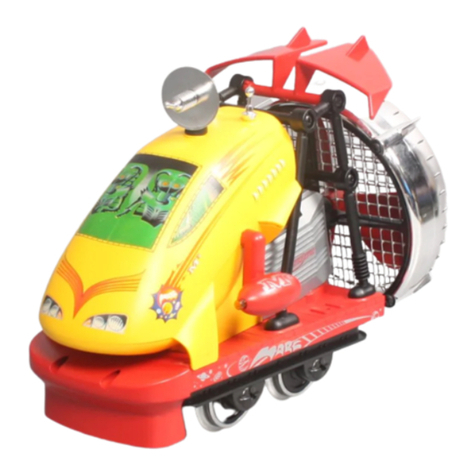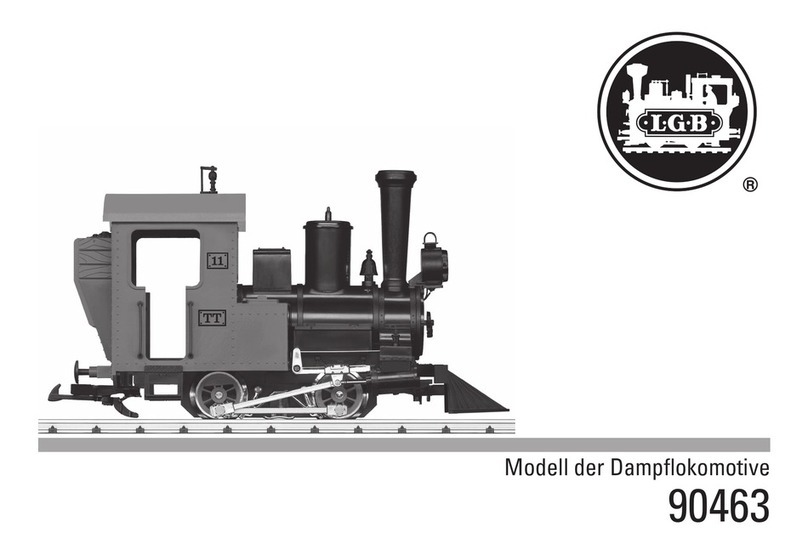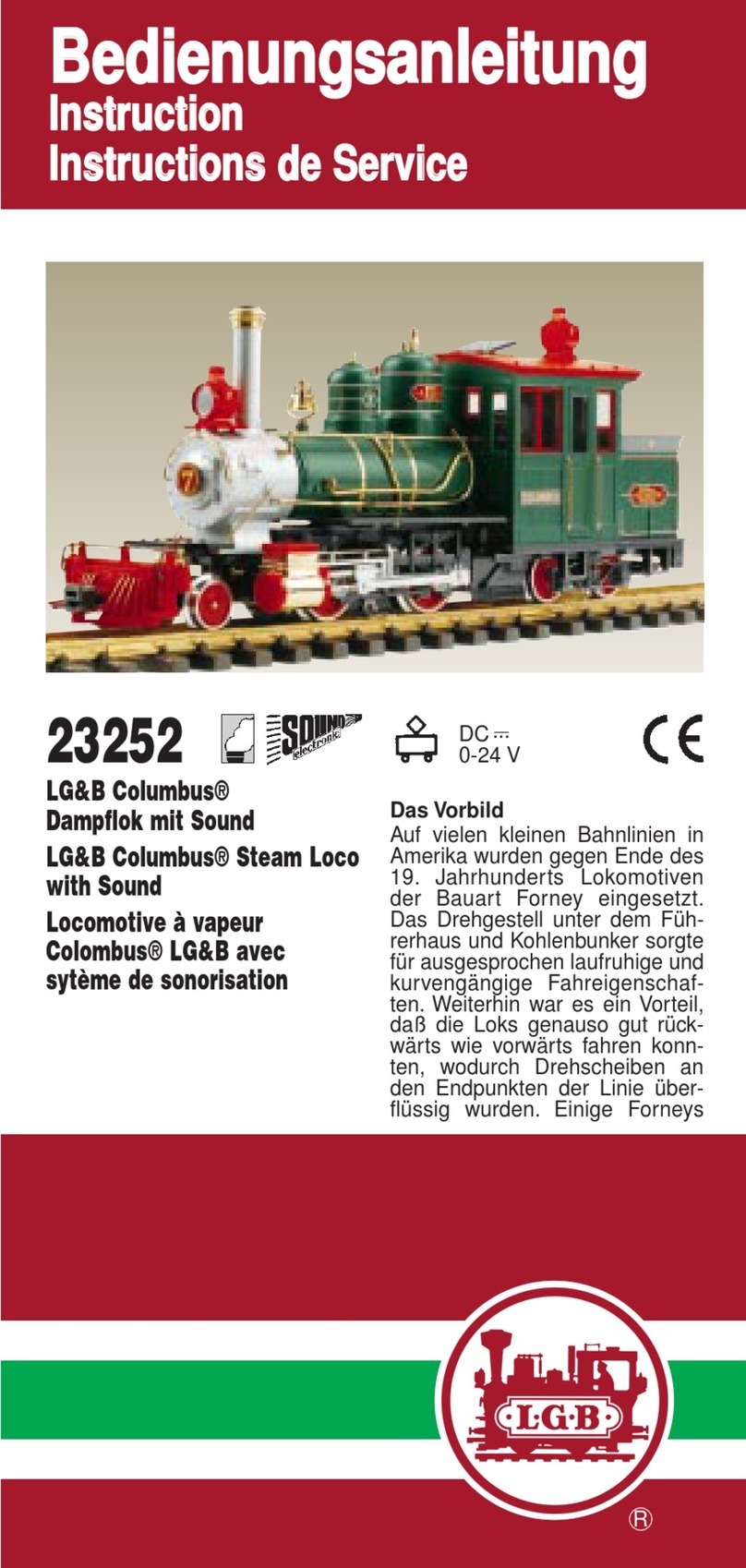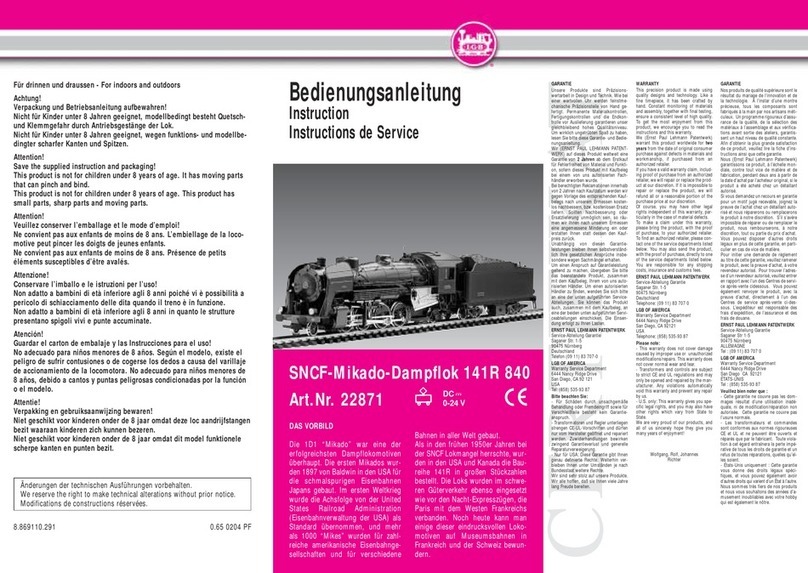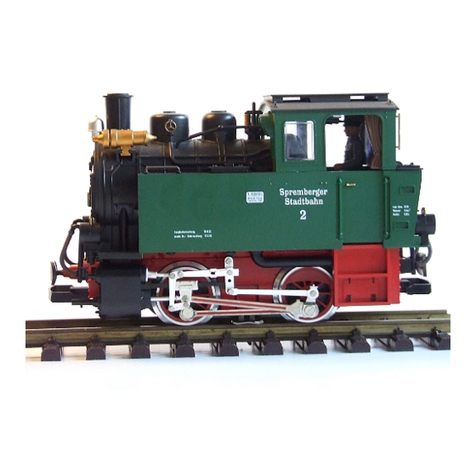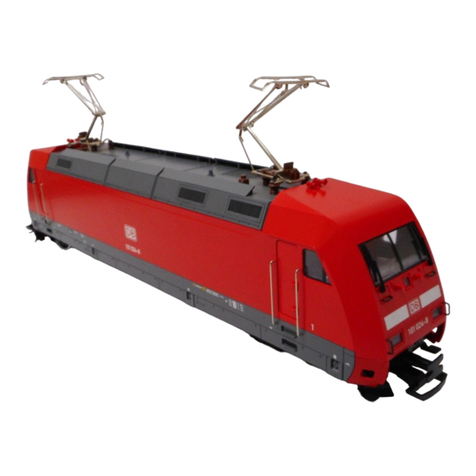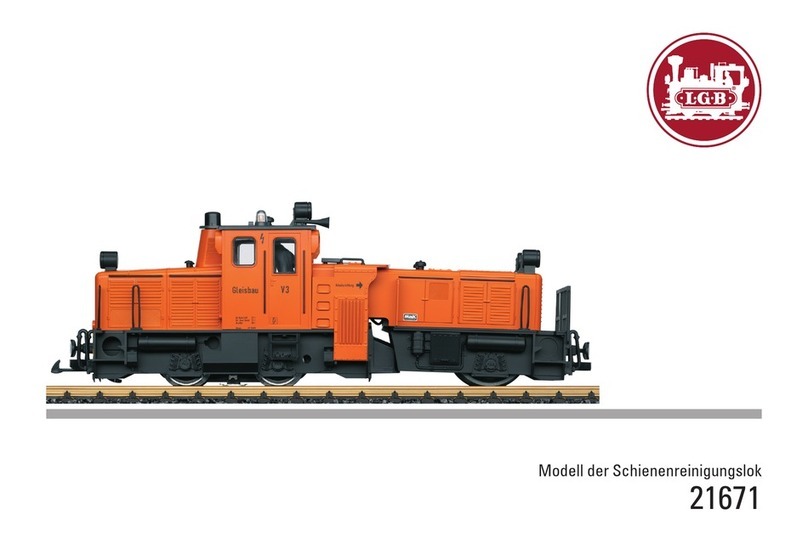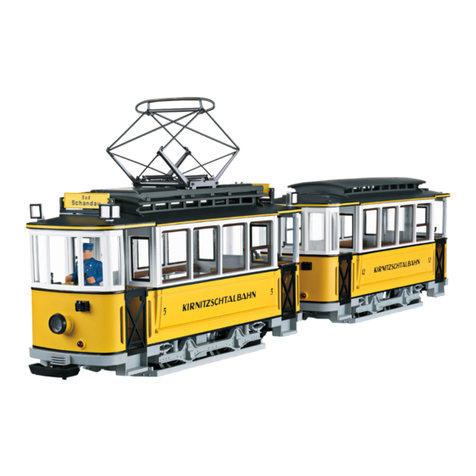
4
Sicherheitshinweise
• Das Modell darf nur mit einem dafür bestimmten
Betriebssystem eingesetzt werden.
• Nur Schaltnetzteile und Transformatoren verwenden,
die Ihrer örtlichen Netzspannung entsprechen.
• Das Modell darf nur aus einer Leistungsquelle versorgt werden.
• Beachten Sie unbedingt die Sicherheitshinweise in der Bedienungsanleitung zu
Ihrem Betriebssystem.
• Nicht für Kinder unter 15 Jahren.
• ACHTUNG! Funktionsbedingte scharfe Kanten und Spitzen.
• ACHTUNG! Dieses Produkt enthält Magnete. Das Verschlucken von mehr als einem
Magneten kann unter Umständen tödlich wirken. Gegebenenfalls ist sofort ein Arzt
aufzusuchen.
Wichtige Hinweise
• Die Bedienungsanleitung ist Bestandteil des Produktes und muss deshalb aufbe-
wahrt sowie bei Weitergabe des Produktes mitgegeben werden.
• Gewährleistung und Garantie gemäß der beiliegenden Garantieurkunde.
• Für Reparaturen oder Ersatzteile wenden Sie sich bitte an Ihren LGB-Fachhändler.
• Entsorgung: www.maerklin.com/en/imprint.html
Funktionen
• Das Modell ist für den Betrieb auf LGB-Zweileiter-Gleichstrom-Systemen mit
herkömmlichen LGB-Gleichstrom-Fahrpulten vorgesehen (DC, 0 – 24 V).
• Werkseitig eingebauter Multiprotokoll-Decoder (DC, DCC, mfx).
• Zum Einsatz mit dem LGB-Mehrzugsystem (DCC) ist das Modell auf Lokadresse 03
programmiert. Im Betrieb mit mfx wird die Lok automatisch erkannt.
• Mfx-Technologie für Mobile Station/Central Station.
Name ab Werk: RhB LD1 Rhaetia
• Die Funktionen können nur parallel aufgerufen werden. Die seriealle Funktionsaus-
lösung ist nicht möglich (beachten Sie hierzu die Anleitung zu Ihrem Steuergerät).
Allgemeiner Hinweis zur Vermeidung elektromagnetischer Störungen:
Um den bestimmungsgemäßen Betrieb zu gewährleisten, ist ein permanenter,
einwandfreier Rad-Schiene-Kontakt der Fahrzeuge erforderlich. Führen Sie keine
Veränderungen an stromführenden Teilen durch.
Betriebsartenschalter
Das Modell hat zwei Betriebsarten–Schalter in den Wasserkästen (Bild 1 – 3).
Schalter links: Rauch an/aus
Schalter rechts: ganze Lok an/aus
Rauchgenerator
Im Analogbetrieb ist der radsynchrone Raucherzeuger aus Gründen des Leistungsbe-
darfs ausgeschaltet. Dieser kann durch Setzen des CV 13 von Wert 32 auf den Wert
96 eingeschaltet werden, das kann aber – je nach Stromversorgung – zur Beeinträch-
tigung der Fahreigenschaften bei sehr langsamer Fahrt führen.
Der Dampfgenerator darf mit max. 5 – 6 ml. Dampföl (Märklin) 2421 befüllt werden.
Elektronischer Sound
Die Pfeife kann mit dem beiliegenden LGB-Sound-Schaltmagneten (17050) ausgelöst
werden. Der Schaltmagnet lässt sich zwischen die Schwellen der meisten LGB-
Gleise klipsen. Der Magnet bendet sich seitlich versetzt unter dem eingeprägten
LGB-Logo.
Platzieren Sie den Magneten auf einer Seite, um die Pfeife kurz auszulösen, wenn die
Lok diese Stelle überquert. Bei Anordnung auf der anderen Seite ertönt die Pfeife lang.
Funktion „Kupplungswalzer“
Diese Funktion ist ein programmierter automatischer Ablauf zum Abkuppeln von
angehängten Wagen. Dabei wird zunächst die Kupplung entlastet und dann abge-
kuppelt.
Diese Funktion ist ausschließlich im Stand möglich. Sie funktioniert nur, wenn am
angehängten Wagen keine Hakenkupplung montiert ist.
Das Modell ist weitestgehend dem Vorbild nachempfunden und ohne große
Kompromisse umgesetzt worden. Daher ist eine sorgfältig verlegte Gleisanlage
Voraussetzung für einen reibungslosen Betrieb der Lok. Unter Umständen kann es auf
der Dreiwegweiche 12360 bei abbiegender Fahrt- je nach Zustand der Weiche – zu
Beeinträchtigungen kommen. In diesen Fällen muss die beiliegende Radlenkerergän-
zung in der Weiche montiert werden (siehe Seite 32). Weitere Radlenkerergänzungen
können über den Märklin-Service bestellt werden.






